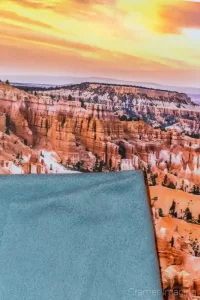How to Clean Your Photos
Shop

Now that you’ve purchased a beautiful new fine art photograph, you probably need some information on how to keep it and clean it. Without such attention, your photo may become dusty and dirty. It may appear distorted from fingerprints and the grime which they may collect. So, now let’s discuss how to clean your photos.
Disclaimers
First off, please use extreme caution whenever you need to clean the direct surface of your fine art photograph. The paper, canvas, or layer of ink on metal, wood, acrylic, etc. is thin and delicate. Use the wrong method of cleaning and you will destroy the treasured photo which you seek to clean and preserve.
When it comes to cleaning one of my photos, the manufacturer provides certain instructions. These instructions cover cleaning the photo directly and also cleaning its housing: the frame. I’ll share this information with you for your assistance. The next installment will cover cleaning picture frames.
How to Clean Your Photos
 When cleaning the photo surface itself, don’t use water or chemicals if you can avoid it. Such will damage the surface of some photos such as those printed on paper. Instead, use a soft microfiber cloth and apply very light pressure. Avoid using dry or gritty cloths as they might cause surface scratches and/or create a static electric charge on the photo’s surface.
When cleaning the photo surface itself, don’t use water or chemicals if you can avoid it. Such will damage the surface of some photos such as those printed on paper. Instead, use a soft microfiber cloth and apply very light pressure. Avoid using dry or gritty cloths as they might cause surface scratches and/or create a static electric charge on the photo’s surface.
If you find you must use water to clean the surface of your photo (say for a wet substance which will stain), then take care. Only use a damp cloth and use light pressure as rubbing a wet or damp photo may cause permanent damage. Blot the photo dry as opposed to rubbing it dry. This will also help to prevent damage to the photo’s surface.
Do not use window cleaning sprays (especially ammonia-based), kitchen scouring compounds/steel wool, or solvents such as acetone, gasoline, or lacquer thinners to clean your photo. These may also cause permanent damage to your image.
Conclusion
Cleaning your photos is a simple matter of removing the grime and dust which accumulates in the least destructive method possible. That method involves soft cloths and blotting. Anything harsher, such as rubbing or something chemically-based, will probably cause permanent damage if not total destruction of your photo. This simple forethought in how to clean your photos will preserve them for years and decades to come.
Best Sellers
Cramer Imaging Newsletter

Receive monthly updates in your inbox from us.






